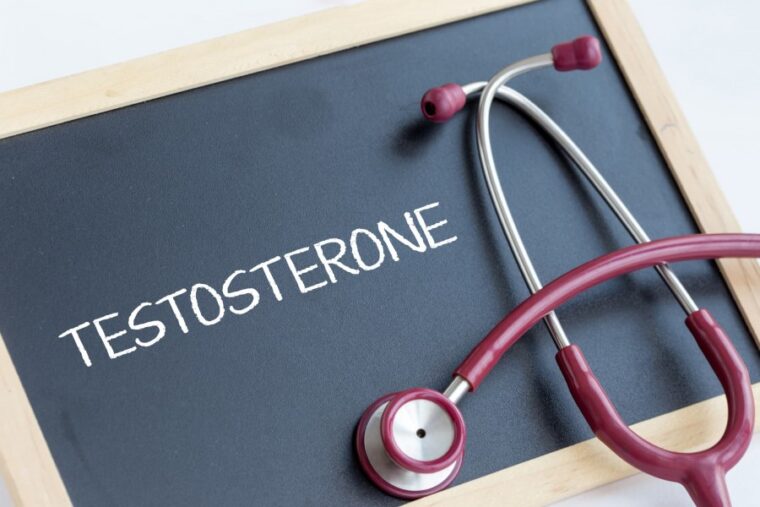As you probably know, the primary male hormone is testosterone. The deficiency of it causes issues for the stronger gender, which will be our subject for today. Testosterone Deficiency Syndrome, also called Hypogonadism, is a unique condition. It occurs when the bodies of human males do not produce necessary quantities of this hormone. While the younger population shouldn’t be afraid of this syndrome as it rarely gets affected, although it’s possible, the older male population can have severe issues with TDS.
There are those who compare it with menopause, and even call it andropause. While the term is catchy, it does not reflect the actual state of affairs. There is nothing women can do to avoid menopause, as it is part of getting old for females; not all more aged males are going to suffer from testosterone deficiency syndrome. This condition is not associated only with getting old, and it is not inevitable. But, once it hits, it can cause problems for men, as it is directly connected with their sex drive, mental condition, physical energy, and of course, muscle mass. In this article, we are going to discuss the diagnosis and management of testosterone deficiency – 2024 guide. For starters, let us go through symptoms.

Symptoms
For most men, symptoms are going to be easily recognizable. The reason is simple, as it is a condition associated with sex drive, the first sign is going to be a reduced libido followed by loss of sex drive due to the inability to have an erection or sustain it for more extended periods. The initial symptoms of Hypogonadism are going to be followed by a lack of ability to concentrate and make instant decisions that you face every day. If you are lucky and avoid the above written crucial signs of testosterone deficiency, you’ll notice that you have it by increased body fat and difficulty conducting tasks and exercises. Those who used to work out will appear slimmer as they’re going to be losing their muscle mass, which is also closely tied to the loss of bone density. When all of these take their tool, you’ll probably start having issues with depression, work performance, and a rise in cholesterol levels is also going to be noticeable.
Causes
Unfortunately, in many cases, doctors won’t be able to discover the valid reason behind testosterone deficiency. While this sounds discouraging, there are many cases when the precise cause behind it can be determined. In most cases, it is closely associated with the production and distribution of other hormones. The hormones that influence testosterone in a not so good way are called pituitary hormones. When there is excess secretion of these hormones, there can be issues with the production of testosterone, which then becomes unavailable for our body. But, as we said, in most patients, a single cause of TDS can’t be found. Luckily, whatever the reason for it might be, there’s a treatment available. In most cases, TDS is treated with a testosterone replacement.
https://www.youtube.com/watch?v=3Ry0QjPN268
Effects
As you have read above, there are many effects of testosterone deficiency, and they paint an ugly picture on their own. But, what comes as even worse is that they can cause many other conditions, some of them being severe. If testosterone levels are not put into normal boundaries, patients can suffer from cardiovascular diseases, which in some cases can even cause death. Furthermore, patients who had Testosterone Deficiency Syndrome also encountered issues with high blood pressure, elevated insulin levels, belly fat, and high cholesterol. To add oil to the fire, there can also be severe cases such as prostate cancer, diabetes, and some other aggressive tumors and cancers.
Diagnosis
Many symptoms can show you the way to low testosterone, but the most common way to find this out is to measure testosterone deficiency by checking total blood testosterone. Once there’s an insight into blood results, the doctor will be able, together with other symptoms, to determine your condition precisely. Above in the article, we have listed many signs that show TDS, all of which will be in your medical history for your doctor to see. When the doctor conducts additional exams and connects the dots of signs and symptoms, you’ll be one step closer to getting treatment after a proper diagnose.

Treatment and Management
When a doctor discovers the cause of TDS, he can determine the treatment, which will be focused on that exact cause. If the reason is the pituitary, as mentioned above, secretion of hormones, there’s a solution in a surgery that is considered a routine. It also can be treated by medications. In most cases, when there is no particular reason why someones have a testosterone deficiency, most medics recommend the same solution – testosterone replacement therapy.
By now, you probably understand that this is the option that most doctors and patients reach for. There is nothing complicated to it, as it revolves around replenishing your missing testosterone levels. All that it takes is the regular intake of the missing hormones. While the therapy is relatively simple, there are variations. One of the options you have at your disposal is the testosterone patches. They can be used daily, but you need to be wary to replace them once they’re burned out.
A similar solution is testosterone gel, which is also being used daily, which can be found at website we linked. Furthermore, you can opt for an injection that would supply you with enough testosterone for a full month, and this is called intramuscular testosterone supplementation. The last option is probably the most viable, and it comes in the form of pellets of this hormone implanted under your skin. If you opt for this, you’ll have no worries with TDS for at least four and no more than six months.
You can also go for treatments that are not recommended by doctors and might not be available in some countries. We are talking about the testosterone wafer, which needs to be dissolved between the gums and the lip. It would be best if you committed to this twice a day, and it can cause gum irritation, which is not something you want to deal with. The second option is not FDA approved, and it is a long-lasting oral preparation of testosterone, which is a thing outside the US.
